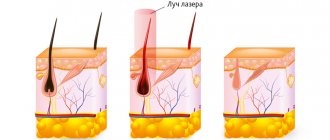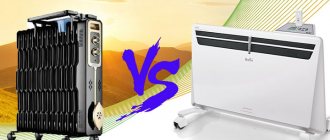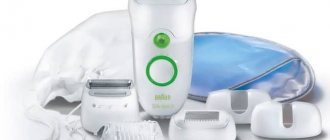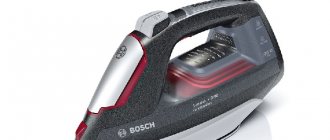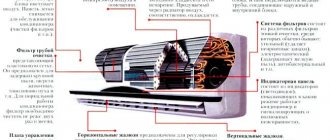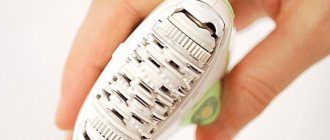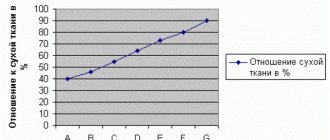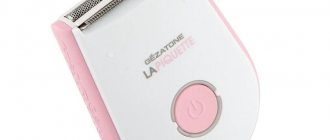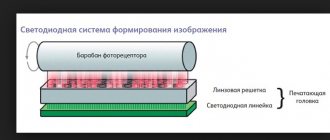Light hair removal is one of the most popular procedures in beauty salons because... only they are able to remove excess vegetation for a long period of time. Both procedures are painless, simple, effective and similar in nature: removal of unwanted hair using light radiation. In the article we will tell you which method is better to choose, how photoepilation differs from laser hair removal, their pros and cons.
The difference between laser hair removal and photoepilation
Photoepilation or laser hair removal have a similar basis, but there are still differences and differences between these manipulations:
- method of influence. Laser hair removal destroys the follicle taking into account the color type of skin and hair structure, and photoepilation is universal;
- duration of the procedure. Photoepilation takes less time because... capable of treating a large area of skin with one flash, unlike laser exposure;
- number of procedures. The laser method requires more sessions than photoepilation.
- photoepilation is less painful and ideal for people with sensitive skin;
- zone of the treated area - with laser hair removal, the area covered is limited, but with photoepilation, the flash spectrum is wide.
- cost of sessions - the price of photoepilation procedures is higher than for the laser method.
Pros and cons of laser epilator
The operation of a laser epilator is based on the effect of a laser beam on the hair structure. This beam is highly accurate and ensures excellent device efficiency. During operation, the laser beam heats and removes unnecessary hairs directly along with the bulb.
The advantages of this procedure include:
- lack of contact with the skin surface;
- high execution speed;
- short recovery time after the procedure;
- no visible skin damage;
- low likelihood of possible complications.
Among the disadvantages of laser hair removal are the high cost of equipment and the temporary effect after the procedure.
Attention! It should also be noted that the high speed of the device directly depends on the treatment of large areas of skin, which is only possible when using professional devices in beauty salons. At home, you will have to process one hair at a time, which will significantly delay the procedure.
What is safer: photoepilation or laser hair removal?
Clients often ask the question about which hair removal is more effective: photo hair removal or laser hair removal. The difference between photoepilation and laser hair removal is approximately the same. The beam during laser hair removal acts on the skin of the face and body gently, as it affects only the bulb and does not affect nearby places on the skin. But still, modern photoepilators have a wide spectrum of radiation, which use various attachments and filters. They help protect the patient from the negative effects of harmful flashes, and their functions allow you to adjust the required length of light energy. After both procedures, the skin acquires slight redness and swelling, which indicates the correctness of the technique. The pain sensations of both procedures are at the same level. This is the difference between photoepilation and laser hair removal.
Difference between laser and photoepilation by body area
First of all, the difference between photoepilation and laser hair removal is the area of the treated surface during the procedure.
During photoepilation, this area is 2-5 cm². With laser hair removal, each hair is processed separately, so the procedure takes longer.
To remove hair from a large area, such as legs, back, photoepilation is better .
And for areas of the body with a small area of hair, you can use the laser hair removal method. Important !
During the hair removal session, you must wear special safety glasses. These techniques, which are based on focusing a light beam, perfectly remove hair under the arms, on the face, legs, and in the intimate area. Some women over 50 have problems with facial hair.
Cosmetologists claim that after several sessions of such therapy, the problem will disappear and will no longer bother you.
Operating principle
What is better and more effective: laser or photoepilation, we suggest comparing and identifying the differences between the two methods below:
Laser hair removal involves heating the hair follicle through exposure to a beating light beam. After several laser sessions, the high-molecular pigment - melanin (contained in the hair follicle) is destroyed. The light beam emits one wavelength and is focused in one zone because The beam area covered is limited and a small part is processed in one session. The maximum permissible hair length should be no more than 0.2 cm.
Today, lasers are divided into several types, which differ in content, in terms of impact efficiency and in the length of the laser beam:
- Diode-based laser - removes fluffy hairs and makes coarse hairs thinner, but does not cope with gray hair;
- Alexandrite laser - used for red and blond hair; for sensitive skin, a cooling coolant is used.
- Neodymium laser - used for coarse and dark hair. After treatment, hair falls out almost immediately.
Photoepilation - light flashes based on IPL high-intensity pulsed light, krypton lamps contained in the device heat the surface of the skin relatively strongly, which leads to the death of the hair, and it eventually falls out with the bulb and hair growth stops.
Flashes of rays emit different lengths (up to 1200 nm), they are able to process not only one follicle, but the area around it. Photoepilation is actively practiced not only to combat excess hair, but also to rejuvenate the skin and get rid of pigmentation on the body. According to cosmetologists, the safest photoepilator technologies are:
- The Super Hair Removal (SHR) system allows you to most gently remove excess hair without causing unpleasant and painful sensations. Treats the area with light wavelengths up to 800 nm. - this is a comfortable temperature that does not allow the skin to overheat. The feeding frequency is 10 Hz, thanks to this it is possible to remove even the lightest hair.
- Elos hair removal (E-light) affects the skin using light and electric current in one flash. Elos heats the area of the hair follicles that are in the active phase and then destroys it. They went on sale not long ago.
Only you can decide whether laser hair removal or photoepilation will better rid you of excess hair for a long time, although both techniques are harmless.
The principle of hair removal technique
To understand what is better, laser or photo hair removal, it is worth understanding how these methods work in principle.
Laser hair removal
During laser hair removal, the device acts with a light (laser) beam on the hair follicle, transferring a significant dose of energy to it, thereby heating it. In just a few pulses, the color pigment melanin (found in the hair follicle) absorbs such an amount of energy that it is destroyed. The laser beam acts locally. It has a constant wavelength, which travels over a small area in one session. To carry out the procedure, hairs must be no more than 2 mm.
Today, several types of lasers are used in cosmetology, which technically differ in the emitted wavelength, and as a result, have different effects and effectiveness.
- The diode laser removes soft hair, while hard hair becomes thinner. Gray hair, devoid of melanin, does not respond to this device and remains in place.
- The Alexandrite laser works well on red and blonde hair. Its effect is delicate and suitable for sensitive skin.
- Neodymium laser. This is the best way to remove dark dense hair. The skin becomes perfectly smooth after the first session.
Photoepilation
During photoepilation, the hair is exposed to high-pulse flashes of pulsed light (IPL). Krypton lamps do the work. They locally significantly heat the skin during exposure, warming up and removing the hair. In the process, the internal structure of the hair, the follicle, is also damaged.
Due to the fact that light pulses have different wavelengths (up to 1.2 thousand nm), the photoepilator works not just one hair at a time, but also a certain location around the area of direct impact. Photoepilators not only remove unwanted hair, but also have a beneficial effect on the condition of the skin and help get rid of pigmentation. There are many photoepilation technologies. The favorites of cosmetologists, they are also the safest, are listed below.
- SHR (Super Hair Removal) technology is the most delicate. Hair is removed carefully and painlessly. The operating wavelength for this technology is 800 nm (with an exposure frequency of 10 Hz). It warms the skin to a pleasant warmth without being too much. These parameters allow you to remove even light, almost melanin-free hair.
- E-light technology (Elos hair removal) has a combined effect of light and electric current discharge (simultaneously, in one pulse). Such a device destroys active bulbs by heating them. This is a new technology that has recently begun to be actively used in salons.
Contraindications and possible consequences
Contraindications for photo and laser hair removal are the same, since the manipulations are similar in principle:
- tanned skin
- tattoos;
- diabetes;
- oncology;
- moles on the treated area;
- any dermatological skin diseases;
- varicose veins;
- pregnancy and lactation;
- venereal diseases;
- genitourinary infections;
- any damage to the skin in the bikini area.
In order for the photoepilation or laser hair removal procedure to be as safe as possible and without negative consequences, you must follow contraindications and preparation for the procedure, otherwise negative complications may arise, such as:
- Burns – most often appear on tanned skin and when the hair length is not maintained;
- Acne-like rashes;
- Swelling;
- Redness;
- Hyperpigmentation – can be experienced by patients with both dark and fair skin
- Folliculitis is inflammation of the hair follicle.
- Impaired sweating due to incorrect settings of the device.
Attention! If any symptoms appear, you should consult a doctor immediately.
Indications and contraindications
A photoepilator, unlike a laser epilator, has light waves of different lengths
It is already quite clear to everyone that the procedure is aimed at an aesthetic effect, gives the skin smoothness, and becomes elastic after the procedure thanks to vibration impulses. The procedure is definitely positive:
- Cosmetologists claim a painless procedure.
- Due to the elastin and collagen produced during the procedure, the skin looks young and more elastic.
- The non-contact procedure does not harm the skin again.
- Treatment can be carried out on any area of the skin surface.
- Great for removing ingrown hairs.
- The duration of the procedure is from 10 to 30 minutes. It depends more on the amount of work.
But unfortunately, many disadvantages and shortcomings are hidden from clients. Contraindications to the procedure are:
- Cancer and oncological diseases. Diseases of cell metabolism destruction.
- Diabetes mellitus, since after the procedure, cell replenishment will take the body’s last strength.
- Blonde and gray hair is not treated with laser hair removal, but remains in places during photoepilation.
- Varicose veins in the treated areas may only get worse.
- Herpis, the presence of scars, tumors, abrasions and injuries can lead to skin infection.
- Epilepsies of various kinds.
- Blood diseases.
- Personal intolerance or increased pain vice.
- A sunburn or a fresh tan will increase the pain threshold.
- Pregnancy and lactation period.
“Read also: Home photoepilator”
Number of sessions
With any laser-based or light-based hair removal, you will need to undergo several procedures to achieve the desired result. One session is not able to get rid of hairs completely; they will grow back, but will become sparser and thinner.
The effect of laser on the skin takes longer than hair removal by photoepilation. For comparison, we will consider several epilation zones and their duration during photoepilation and laser hair removal.
| Zones | Photoepilation | Laser hair removal | ||
| Deep bikini | 20 minutes. | 11 sessions | 60 min. | 9 sessions |
| Upper lip | 7 min. | 5 sessions | 20 minutes. | 4 sessions |
| Armpit | 10 minutes | 8 sessions | 25 minutes | 7 sessions |
| Legs (shin) | 15 minutes. | 6 sessions | 30 min. | 7 sessions |
Attention! These indicators indicate the average duration of sessions and the duration of procedures.
The minimum interval between the first and second procedures is 30 days , photoepilation 20 days. After the main 5 sessions, most clients experience complete hair removal.
The full course is individual for each girl; procedures are carried out over six months. To maintain smoothness, it is necessary to undergo repeated correction once a year with a course of two procedures.
Photo – or laser hair removal at home
You can carry out light depilation at home using portable devices that are sold specifically for home use. If you choose lasers for the home, it is best to opt for a modern diode-based model; only they allow you to deal with coarse and light hairs at home without negative consequences on the body. A significant advantage of the diode laser is that there is almost no pain. But take note that home appliances have low power compared to salon appliances, therefore, the effect will be short-lived. The technique can be seen in the public videos. Photoepilators have double filters that prevent the epilated area from intense irradiation. The light flashes from home appliances are small, but still easily and simply treat areas, even separately growing stubble. The depilation process is less labor-intensive compared to other types.
Laser hair removal. The essence of the procedure
What is better: laser epilator or photoepilator? The operation of the first system is based on the emission of electromagnetic waves of a fixed length. This allows the laser beam to act strictly on the hair follicle and hair growth area. Due to the constant wavelength, the radiation scatters very little and is focused on the hair and not on surrounding tissues. All this allows you to obtain a long-term effect in a relatively small number of procedures.
The energy of a neodymium laser, compared to the other two types of laser, is dissipated more. Therefore, it is often not enough for coagulation (“sealing”) of the vessels feeding the bulb. This means that with a neodymium system you will need to do more procedures to combat unwanted hair.
The interval between the first two procedures is from 4 to 7 weeks. With each subsequent visit to a cosmetologist, dormant follicles wake up much more slowly. The phases of hair growth are individual for each patient, so for some, 6 weeks should pass between the first and second procedures, and for others, all 10.
What is better: laser hair removal or photoepilation in terms of discomfort? Mild pain, or rather tingling, is the same for both methods. If the patient feels hot during the procedure, this is abnormal. It has been noticed that with each subsequent epilation the pain decreases. This is due to the fact that if the intervals are selected correctly, the amount of hair decreases with each visit.
The sensations also depend on the type of skin and hair, because these parameters affect the thermal relaxation time. This is the period required for the laser treated area to cool completely. It is believed that the alexandrite laser is the most tolerant, and it is a little more difficult to undergo the procedure with a neodymium or diode laser. This is due to the fact that the alexandrite laser is much better absorbed by melanin, and the other two lasers, in addition to hair, are also absorbed by skin vessels. If only the hair follicles are heated, the skin cools faster. If both the follicles and blood vessels are heated, then it will take more time for the skin to return to its original state.
The thermal relaxation time is also related to the size of the spot, that is, the area of radiation exposure. If the procedure is performed with a handpiece with a diameter of 5 mm, then it will be tolerable when compared with a handpiece that is twice as large. But the procedure will take longer, so balance is important here.
The thermal relaxation time can be reduced by using additional cooling factors—cryogas, the temperature of the handpiece itself, or a flow of cold air. At the client’s request, the doctor can apply topical anesthesia in the form of an anesthetic cream or additionally apply a cold pack.
It must be said that with an alexandrite and neodymium laser the procedure is slower than with the latest generation diode or alexandrite laser (Moveo technology). The time depends on the rate at which the capacitance is charged to generate the flash.
Preparation for the salon procedure
Hair removal with a laser can be done regardless of the season, but photoepilation has limitations; it is recommended to use it with the onset of cold weather. The courses are quite long, so if the manipulation is prescribed in the spring, the course will not be completed by summer, and since during this season the skin is exposed to sun tanning, you can get a burn by combining both methods.
You should always start preparing for manipulation in advance and correctly. A month before the session, you must visit a dermatologist to completely rule out any dermatological skin diseases and identify malignant moles with a special dermatoscopy device at the treatment site (otherwise the moles may develop into a tumor). If light influence is planned in the bikini area, you must visit a gynecologist so that the doctor can conduct a preventive examination and rule out infectious diseases of the genital tract, otherwise irritation may occur in this area.
If doctors have not identified any violations, then 2 weeks before hair removal you should completely avoid tanning under the sun or in a solarium, and 7 days before, shave the regrown hairs with a razor, as longer hairs can cause burns, and short hairs do not have flashes. will have an impact.
Attention! Before the procedure, you should avoid using cosmetics that contain alcohol or oils.
Skin care after procedures
The skin recovers within five days after the manipulation, so you should refrain from visiting the pool, do not take hot baths and saunas, and rubbing the area with a hard washcloth is prohibited.
Immediately after the session, you need to apply a softening and restorative body cream to the skin; good for burns, you can treat them with Panthenol or Bepanten, the composition is no different and they are often compared. Before going out into the sun, it is recommended to apply SPF-40 sunscreen to the epilation area.
Between sessions, hair can be removed with a razor; sugaring and waxing should be forgotten so that the manipulations give the desired result.
Cost of services
The cost of procedures is determined by each beauty salon or clinic individually. This is influenced by the price of the equipment used for manipulation, auxiliary drugs, the qualifications of the specialist and the region.
As mentioned above, photoepilation is a universal device, therefore it is in great demand in the beauty services market and this is influenced by the price per session. The cost of one photo procedure is much higher than laser hair removal. We will conduct a comparative analysis of the prices of photoepilation and laser hair removal in different areas. To undergo one session of photo-epilation in the deep bikini area, the amount differs significantly and will average 4,500 rubles, and with the help of a laser 2,800 rubles. To treat the armpits with a light laser will cost 1000 rubles, a photo with a flash will cost 2500 rubles. The legs will cost 9,000 rubles. for photoepilation, and 4300 rubles. with laser.
Recommendations
Each quick removal method is used for one purpose, but they work differently - this may depend on the color of the skin, the presence of a tan, and the individual character of the body. The optimal length for these hair removals should be no less than 0.1 cm, and no more than 0.2 cm. Correctly selected size is the key to the effectiveness of the procedure. Otherwise, the hairs will need to be shaved with a machine 2 days before light manipulations.
Both procedures do not guarantee that hair will disappear forever after completing the full course. After a certain time, dormant hairs can become active again and begin to grow, but they become thinner and softer. In this case, to maintain smoothness, it is necessary to undergo repeated correction once a year with a course of two procedures.
